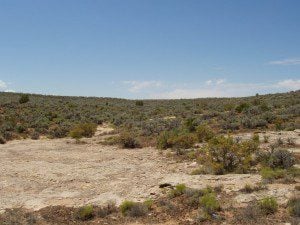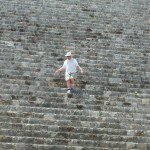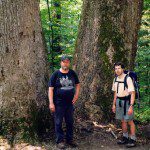
One of the most useful – and most difficult – skills in life is to learn to see things as they really are, unvarnished by either fear or wishful thinking. As children we learn that if we go out in the rain we will get wet but we won’t melt. We learn that our homework won’t do itself. We learn there are no monsters under our beds, though sadly we learn there are sometimes monsters in other places. The wider we can expand this practice of seeing things as they really are the better we can successfully navigate the challenges of life.
Last night thirteen tornadoes came through North Texas. Dozens were injured, many homes were destroyed, and at last count six people were killed. This is tragic and I offer my sympathies to the dead and injured and to their friends and families, but this is not an uncommon event – this is typical of Spring in the Central and Southern United States. Other areas have their own hazards: the East and Gulf Coasts have hurricanes, the West has wildfires, the North has blizzards, California has earthquakes and Hawaii has volcanoes. For all its beauty and majesty, Nature can be terrifying and destructive.
How, then, can anyone proclaim as I did that developing a sacred, reverent relationship with Nature is not only a good thing, but an essential thing?
We must see things as they are. We were not placed on the Earth, we grew out of the Earth. All evidence suggests life evolved once, therefore we are related to every other living thing on this planet. We are dependent on Nature for food and water, for energy, and for the very air we breathe. Our fates are inseparably intertwined with the fates of every other species and ecosystem and we ignore them at our peril. Nature doesn’t need humans, but humans need Nature.
The Abrahamic religions teach that humans are at the center of the Universe and God is at its head. When we see things as they are, events such as last night make it clear that whatever our place is in the grand scheme of things, it is not at the center of the Universe. And they make it clear there is no head – there is only the Whole.
Contrary to what we like to think, our conscious minds do not control our lives. Try holding your breath for 10 minutes. Try willing your heart to pause, or your digestion to stop. We’ve all be warned not to go to the grocery store when we’re hungry. And as the proponents of marriage equality remind us, I didn’t choose to be heterosexual. The entity that is you is just as much blood and bone as it is brain, as much feeling as thought.
Likewise, the entity that is Nature is composed of rocks and trees and fish and bears and rivers and tornadoes… and humans. We are part of Nature and we need Nature just as our little fingers need the rest of our bodies.
When we accept that we aren’t at the center of the Universe, we are free to deal with things as they are. Destruction and untimely deaths are still painful, but they carry only ordinary pain. We don’t have to wonder why a tornado struck our house. There are physical reasons but no metaphysical reasons. We don’t have to torture ourselves further trying to figure out “why?” We just have to console the survivors, mourn the dead, pick up and move on.
Now if this sounds naturalistic (i.e. – non-theistic) that’s OK. The Universe behaves in a rather non-theistic fashion, at least most of the time. But there’s still the pesky question of religious experiences. What am I to do with my experiences of wonder and awe? What am I do to with my experiences of Danu, Dagda, Isis, Osiris, and many more? What am I to do with my direct communion with Cernunnos? What am I to do with my mystical experiences of my ancestors – some known and some unknown?
I can either rationalize them away or I can accept them as they are. Accepting them as they are helps me live a more meaningful, more confident, more dedicated life. Of course, if your religious experiences aren’t helpful, by all means interpret them differently. We don’t know with absolute certainty which approach is correct, and I doubt we ever will.
Nature is beautiful and terrible, creative and destructive. We are a part of Nature, but only a part: not the center and not the head. When we learn to see things as they are, we can develop a deep connection with Nature and a love for Nature, even as we mourn the losses caused by Nature.

















